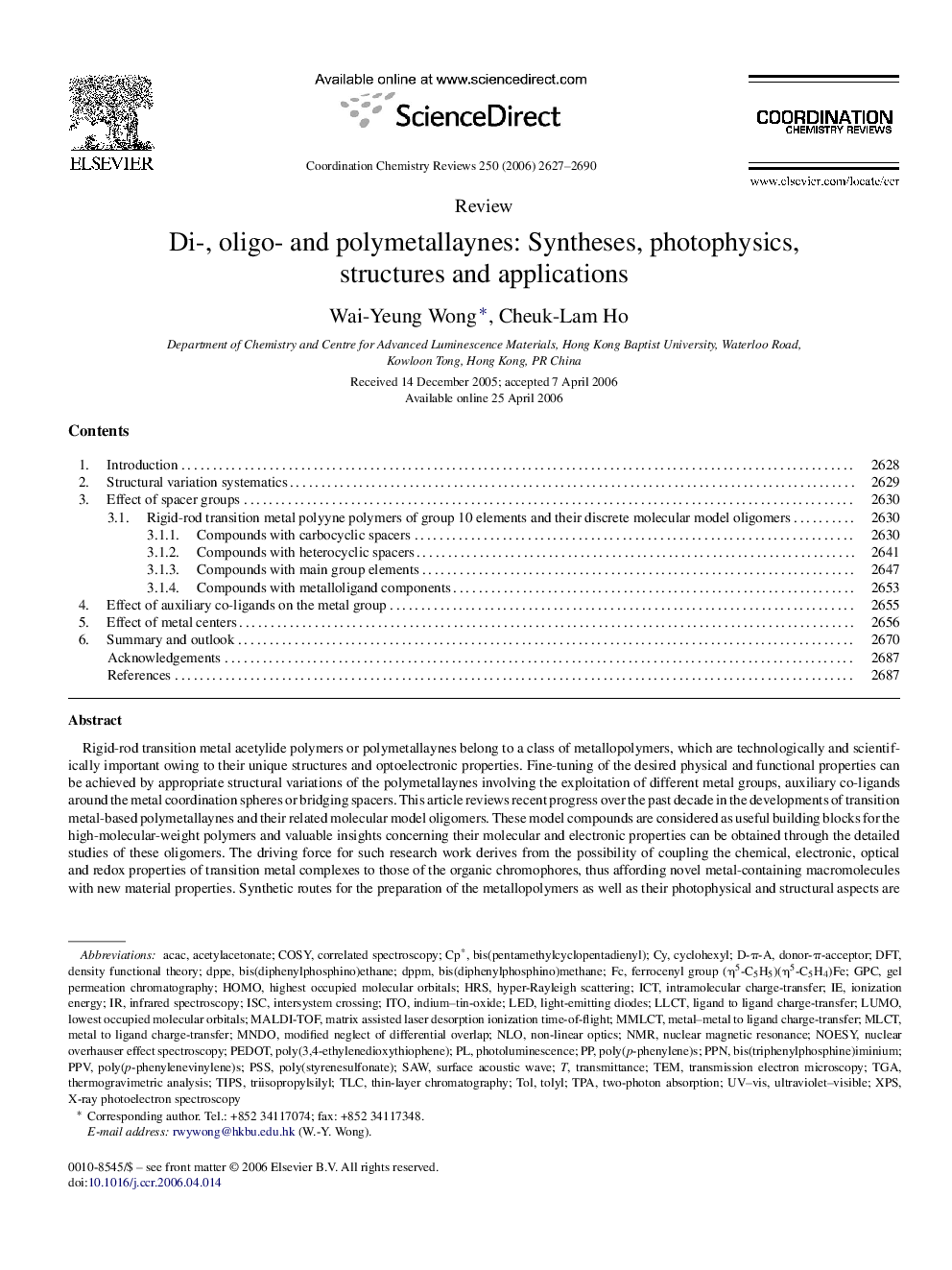| Article ID | Journal | Published Year | Pages | File Type |
|---|---|---|---|---|
| 1299558 | Coordination Chemistry Reviews | 2006 | 64 Pages |
Rigid-rod transition metal acetylide polymers or polymetallaynes belong to a class of metallopolymers, which are technologically and scientifically important owing to their unique structures and optoelectronic properties. Fine-tuning of the desired physical and functional properties can be achieved by appropriate structural variations of the polymetallaynes involving the exploitation of different metal groups, auxiliary co-ligands around the metal coordination spheres or bridging spacers. This article reviews recent progress over the past decade in the developments of transition metal-based polymetallaynes and their related molecular model oligomers. These model compounds are considered as useful building blocks for the high-molecular-weight polymers and valuable insights concerning their molecular and electronic properties can be obtained through the detailed studies of these oligomers. The driving force for such research work derives from the possibility of coupling the chemical, electronic, optical and redox properties of transition metal complexes to those of the organic chromophores, thus affording novel metal-containing macromolecules with new material properties. Synthetic routes for the preparation of the metallopolymers as well as their photophysical and structural aspects are summarized. Various up-and-coming applications of such family of compounds as molecular electronic, photonic and chemical sensing devices are also critically discussed in this review.
